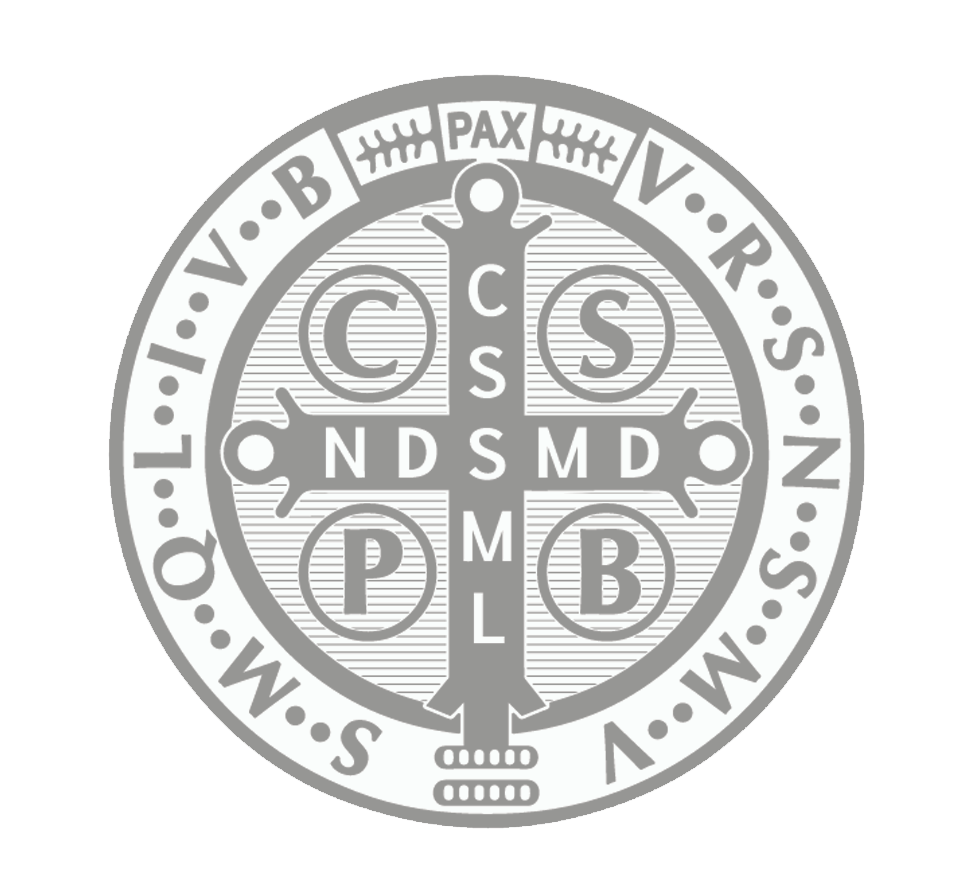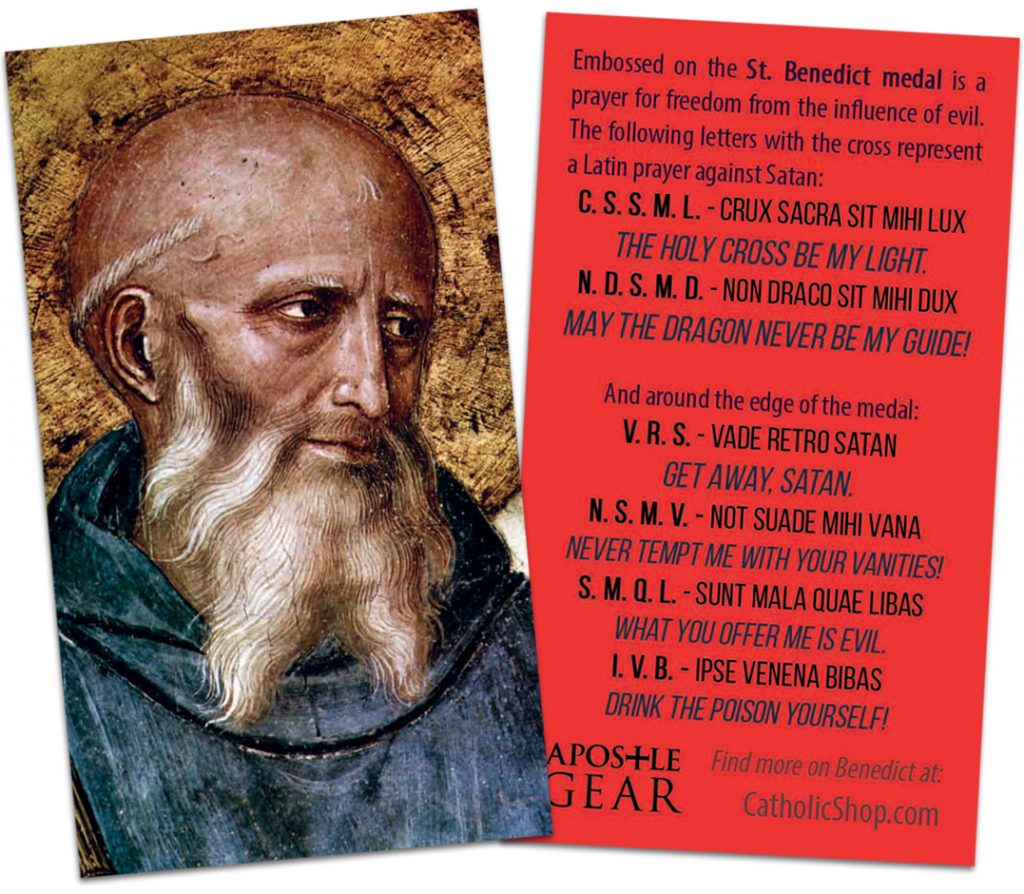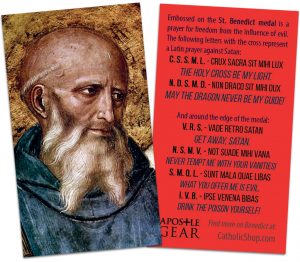
According to many priests (especially exorcists), the St. Benedict Medal is one of the most powerful spiritual objects in the church to “repel evil.” The medal has been used in exorcisms and worn by the faithful for hundreds of years.
Should you wear a St. Benedict medal? Read this article to learn why you might want to consider it.
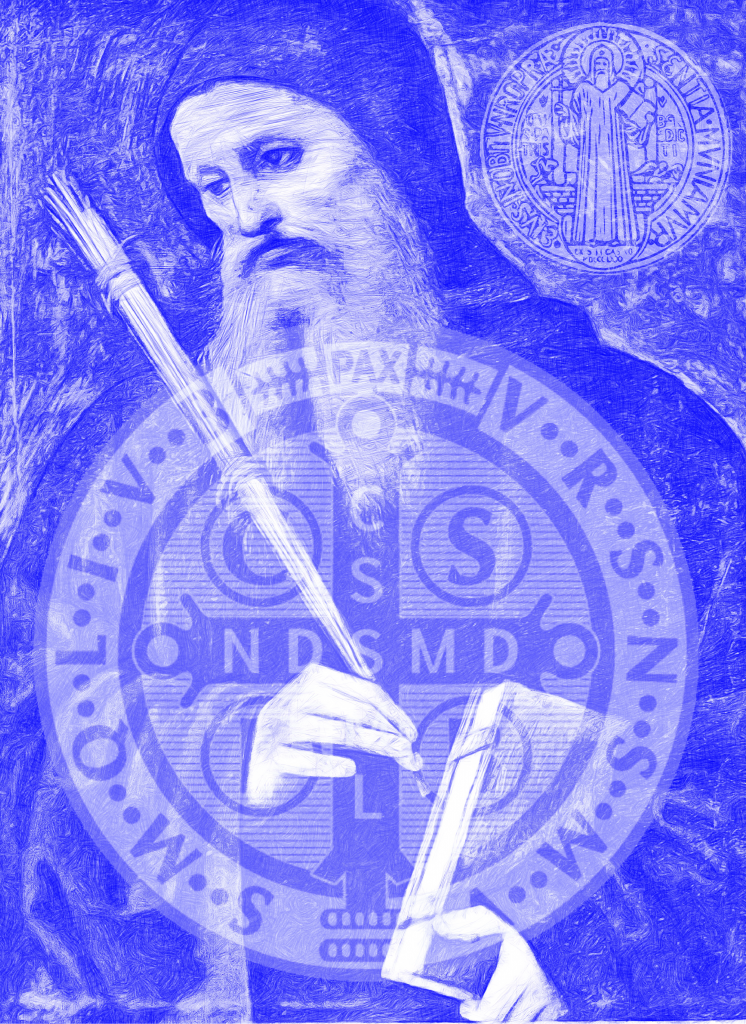 Who Was St. Benedict?
Who Was St. Benedict?
St. Benedict of Nursia, Italy (A.D. 480-543) was the twin brother of St. Scholastica. Theologians consider St. Benedict to be the “Father of Western Monasticism.” His Rule came to be the basis of organization for the Franciscans, Dominicans, and other religious orders.
Benedict had been living in a cave near Naples, Italy for three years as he developed his spirituality. One day, a group of monks came to him and asked him to be their abbot. He agreed but insisted on the monks maintaining a life of greater piety.
Some of the monks in the order disliked Benedict’s approach, so they hatched a plan to do away with him by poisoning his wine. Benedict, however, was miraculously saved after he prayed a blessing over the cup, and the cup shattered!
He returned to his cave at Subiaco but was almost poisoned again, this time with poisoned bread. This time, he prayed a blessing over the bread, but a raven swept in and took the loaf away.
The History of the St. Benedict Medal
After Benedict’s death, the Church came to invoke his intercession against evil (just as Benedict was saved miraculously from evil) and the St. Benedict medal is one of the most powerful objects used in exorcisms.
Pope Benedict XIV recommended the use of the medal to the faithful in 1742. The medal usually worn today (and sold on CatholicShop.com) was designed by a monk named Desiderius Lenz, from the Beuron Art School. Lenz designed it in 1880 for the 1400th anniversary of the birth of St. Benedict.
The Front of the St. Benedict Medal
The front of the medal depicts St. Benedict holding a cross and his rule. The word PAX can be seen on the top, which means “peace.” To one side of St. Benedict is a poisoned cup and a raven on the other―both references to a Benedictine hagiography―and above the cup are these words:
Crux sancti patris Benedicti
(The Cross of [our] Holy Father Benedict)
Surrounding St. Benedict are the words:
Eius in obitu nostro praesentia muniamur!
(“May we be strengthened by his presence in the hour of our death”)
This refers to St. Benedict being a Patron of a Happy Death (along with St. Joseph).
The Back of the St. Benedict Medal
On the back of the St. Benedict medal is a cross with the letters C S S M L – N D S M D. These letters are actually the initials of these words: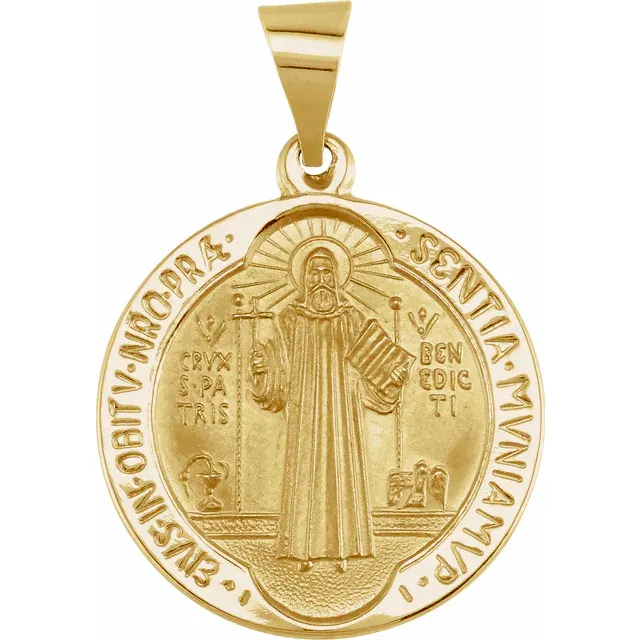
Crux sacra sit mihi lux! Non draco sit mihi dux!
(“May the holy cross be my light! May the dragon never be my overlord!”)
The larger letters, C S P B, are for these words:
Crux Sancti Patris Benedicti
(“The Cross of [our] Holy Father Benedict”).
On the back of the St. Benedict medal are the letters V R S N S M V – S M Q L I V B, which are the initials of the Rite of Exorcism prayer:
Vade retro Satana! Nunquam suade mihi vana!
Sunt mala quae libas. Ipse venena bibas!
(“Begone Satan! Never tempt me with your vanities!
What you offer me is evil. Drink the poison yourself!”)
Spiritual Benefits of Wearing a St. Benedict Medal
Dom Gueranger highlighted the positive effects of wearing a St. Benedict medal, which include:
- asking for inner peace/spiritual healing;
- asking peace between individuals or between nations of the world;
- curing bodily afflictions especially as protection against contagious diseases;
- destroying the effects of witchcraft and all other diabolical and haunting influences;
- healing those who are suffering from wounds or illness;
- obtaining the conversion of sinners, especially when they are in danger of death;
- offering protection against storms and lightning;
- protecting children from nightmares;
- protecting a mother and her children during childbirth;
- protecting animals infected with plague or other maladies;
- protecting fields infested by harmful insects;
- protecting or otherwise counter the effects of poison;
- protecting those persons who are tempted, deluded or tormented by evil spirits.

Not Just For Exorcists
The St. Benedict medal is used by exorcists, even today. Lay people are permitted to use the St. Benedict Medal to ward off evil (but not conduct exorcisms). Some of the medal’s permitted useage by the Church includes:
- wear the medal around the neck;
- attach it to one’s rosary;
- kept in one’s pocket or purse;
- attach it to one’s keychain;
- affixed to one’s car or home;
- placed in the foundation of a building;
- affixed to the center of a crucifix, usually behind the corpus.
♥ See our extensive St. Benedict line which includes medals, bracelets, rosaries and more.
Wear these St. Benedict Bracelets bracelets for protection, style, and to always remind yourself that God has given you a mission to make the world a better place.
Many of these special bracelets feature ten St. Benedict medals woven together with heavy paracord. Having ten medals also means that these bracelets can double as a way to pray the rosary.
Also included is our exclusive St. Benedict Prayer Card, which features the powerful Benedictine prayer against the influence of evil, in both Latin and English.


